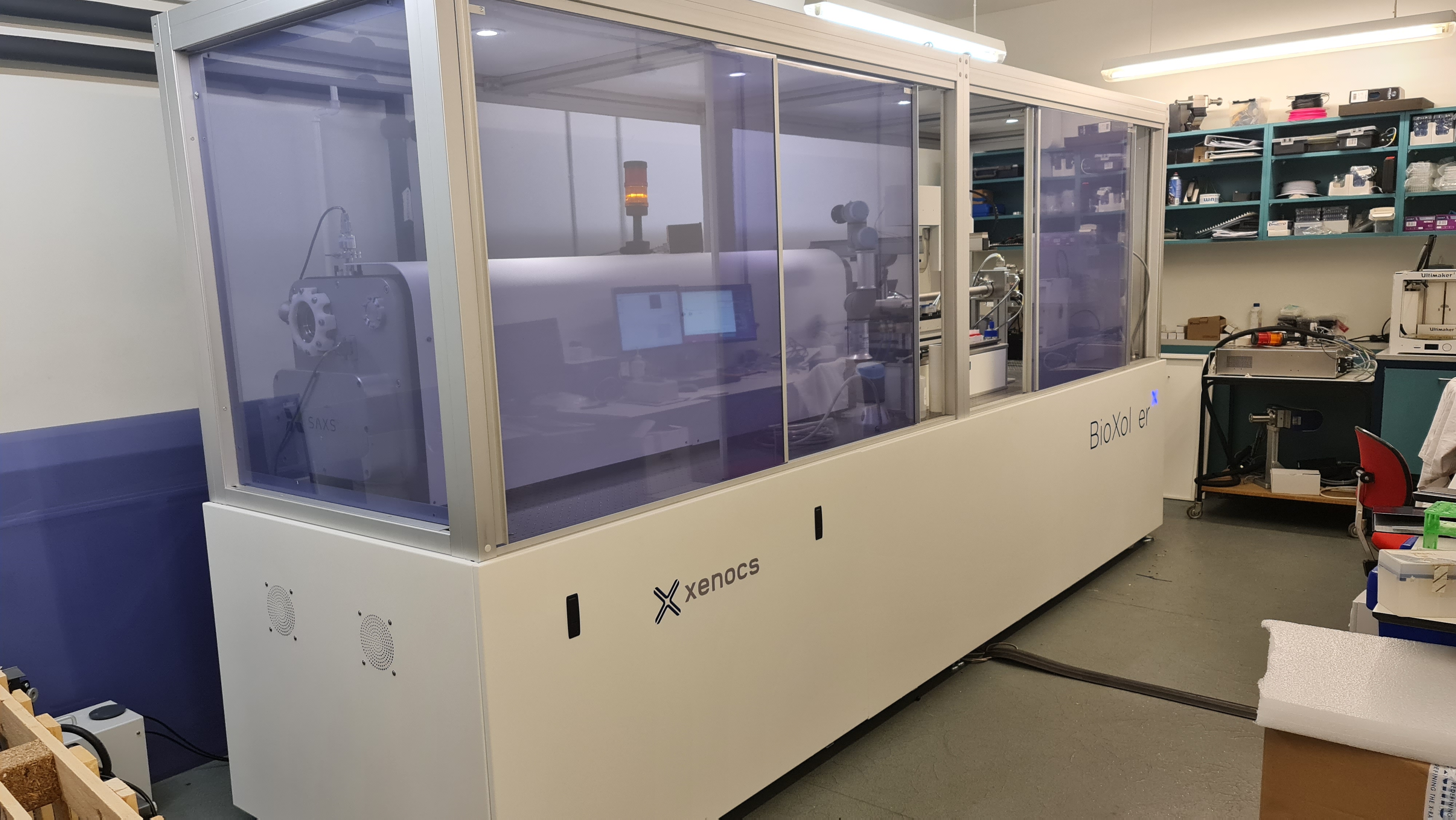CPHSAXS, the In-House Biological Small-Angle X-Ray Scattering (SAXS) Facility at UCPH
The new SAXS facility, CPHSAXS at the Faculty of Health and Medical Sciences, UCPH, hosts a BioXolver L from Xenocs, which is dedicated to biological samples in solution. Initially developed at the Department of Drug Design and Pharmacology, Faculty of Medical Sciences, by SAXSLAB in collaboration with the BIOSAXS group, the equipment has been updated and is now a state-of-the-art, high-throughput, small-angle X-ray scattering instrument. Through funding from the Novo Nordisk Foundation, the instrument is now in operation as an open facility.

What is SAXS
Small-angle X-ray scattering can provide information on the size of molecular entities in monodisperse samples, their 3D shape, the folding state of the entity, information on complex equilibria in a solution, entity conformational changes and more. In addition, it can provide information on the interaction forces between the entities, be it attraction or repulsion. As SAXS can be measured under most solution conditions, this provides for an opportunity to screen many sample conditions for e.g. aggregation in a rapid way.

What is possible at the facility
At CPHSAXS, we have a setup with automated sample loading in a 96-well plate setup. The instrument can measure particles up to a size of approximately 150 nm and has the capability of measuring in different configurations including one that can measure wide-angle scattering up to 2.8 Å. The temperature can be varied between 4˚C-65˚C opening possibilities for protein stability determination.
At CPHSAXS, we offer different degrees of support, ranging from collaborations with investigators without prior knowledge of the method to fully self-sufficient users. Users from both academia and industry are welcome.

Optimal formulation of a putative biopharmaceutical and of a sample for high resolution structural investigations are of uttermost importance for a successful outcome of a research project. Hence, we are currently working on a fully automated mixing system which in the future should make it possible to do high-throughput screening of a range of macromolecule solution pH or salt concentrations, only by providing the facility with the sample and solutions.
The equipment at CPHSAXS is sufficient for many projects. For projects requiring the higher intensity of synchrotron radiation, CPHSAXS can function as a platform for screening samples before experiments abroad, this way making optimal use of the limited beam-time available at the large-scale facilities such as MAX IV, ESRF or Petra.
 Contact information: https://drug.ku.dk/core-facilities/cphsaxs/
Contact information: https://drug.ku.dk/core-facilities/cphsaxs/
Twitter: @CPHSAXS

Pernille Sønderby Tuelung is the Facility Manager at CPHSAXS. She has been working with protein structural characterization, focusing on small-angle X-ray scattering since her Master's at DTU. During her PhD and postdoc, she continued working on protein-peptide binding/complex formation and protein-protein interaction in formulations, while being particularly fascinated by the interaction forces governing proteins in solutions at high concentrations.
